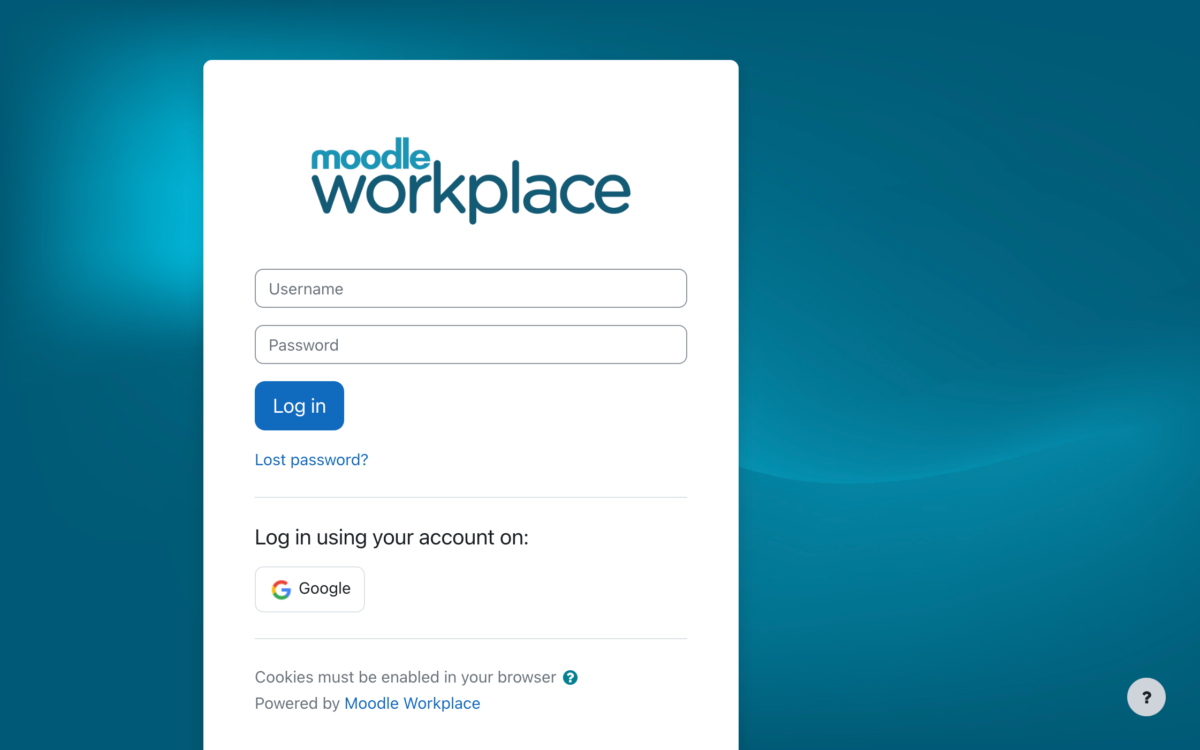The highly anticipated Moodle 2.0 learning management system software has been released. This is a major release and is now publicly available. It is fair to say Moodle 2.0 has been years in the making. Kudos must go to its generous Community – developers, partners, testers, supporters, teachers, trainers, administrators, researchers and students, who have contributed to this exceptional release.
The purpose of this article and accompanying screen cast is to outline some of the new and improved feature enhancements. This is not intended to be a definitive list of all new and improved features. It is impossible to illustrate everything in a page or a short video – so, apologies in advance for all aspects not mentioned. On the same token, you’re encouraged to explore the Moodle 2.0 release notes, download the freely available software and make your own value judgement.
Overview
In a nutshell, there’s a lot to get excited about with Moodle 2.0 for existing 1.9.x users and for those evaluating the merits of Moodle as their learning management solution. Here’s a quick summary of the more notable new and improved features:
- Improved usability
- Better range of standard themes
- More places to tag and comment
- Manage learning paths via cohorts, conditional activities and progress tracking
- Import data from services such as youtube, flickr etc to moodle via the repository plugin
- Export data to external services such as mahara, google docs and boxnet via the portfolio plugin
- Ability to advertise and share courses via community hubs function
- New and improved administration functions including roles, backup-restore, language editing, web services and more…
Navigation
User-centric design has been a development priority for Moodle 2.0 and it is clearly evident with the improved user navigation experience. It is now possible to navigate to most places with fewer clicks. The navigation block is pinned to the top left of all pages and contains personalised and contextualised links to home, blogs, tags, profile, forum posts, messages, private files, enrolled courses, topics and activities.
Blocks
Blocks are now consistently implemented on every page in Moodle and can now be positioned in the left, right and centre columns. This gives more freedom and flexibility in terms of page layout.
Blocks can now be docked on the side of the page, if this is supported by the selected theme. This helps to de-clutter the page and gives more space to display things that matter most, for example, course resources and activities. The user can access the hidden, collapsed functions of any docked block with a simple mouse over. Naturally, the blocks can be undocked with a single click and this functionality does not affect other users’ view of the system. New blocks include:
- Comments block – like a shoutbox, allows comments to be added to any page.
- Community finder block – search courses from other moodle instances via hubs function and add links
- My private files block – allows easy access to a personal file repository with storage quota support.
- Course completion status block – reports on the completion status of your courses.
Themes
Moodle has done much to improve its visual appeal. There is now a larger and more attractive selection of standard themes presenting a range of colours, styles and fonts. Some of the standard themes have a settings page that is accessible via the Moodle administrator interface to allow easy customisation of common styling elements such as logo, font, colours etc without the need to use FTP or a server control panel to make such edits.
Horizontal menu items can be quickly created and modified, again, via the Moodle administrator interface. The horizontal menu improves user navigation and goes beyond the existing breadcrumb navigation system.
It must be mentioned that Moodle 2.0 uses a new theme architecture meaning that code from standard and custom themes for moodle 1.9.x or earlier won’t be upwardly compatible to 2.0 – existing themes need to be modified or redone. Or else, simply choose one of the 16 standard themes as a starting point. Base and canvas are included in the latest release as a reference point for theme designers. Take the time to learn about the new theming system – it is well documented. On the same token, third-party designers are now contributing themes that are Moodle 2.0 compatible.
Editing and file management
The new HTML editor is based on TinyMCE – an open source and platform independent Javascript HTML WYSIWYG editor. This now means cross-browser compatibility with Internet Explorer, Firefox, Safari, Chrome and Opera. It includes a resizable editing area, spell checker and full integration with configured external repositories to import and embed media and text.
The ‘Files’ area and the file upload process that current Moodlers will be familiar with has been replaced by a repositories system. There are numerous repository plugins, that when enabled and configured by your Moodle administrator give users more choices to share content via the learning management system. The file picker function is the new metaphor to pull or import data into Moodle. There is a global setting where legacy course files can be made available in new courses. By default, legacy course file areas are only available in upgraded courses.
User data contributed to Moodle via activity modules such as forums and assignments can now be exported or pushed to external systems including Box.net, Flickr, Google Docs, Mahara and Picasa. Supported formats include LEAP2A, HTML, images and text. These portfolio plugins can be configured and enabled by your Moodle administrator and promote student ownership, control and portability of their data.
Resources
The key improvement to the ‘Add a resource’ function available in all Moodle courses for editing teachers and higher roles is a simplification of the language as follows:
- ‘Link to a file or website’ is now ‘File’ and ‘URL’ respectively
- ‘Display a directory’ is now ‘Folder’
- ‘Add an IMS content package’ is now ‘IMS content package’
- ‘Insert a label’ is now ‘Label’
- ‘Compose a text page’ and ‘Compose a web page’ is now ‘Page’
Activities
Blogging in Moodle has evolved nicely. While strictly speaking, the blog function is not an activity, entries can now be associated with a course, commented on, searched and external blogs can be fed and synchronised to a Moodle blog.
One of the attractions of open-source software, is how well written, documented and maintained third-party contributed code can become part of a core stable release. The popular ‘Feedback’ module did find its way into 2.0. This flexible activity is useful for course evaluations, surveys, web forms etc, produces some nice analytics and the data can be exported to file. There is also a feedback block that complements this activity. Both however, are hidden globally by default – so they will need to be enabled by your Moodle administrator.
One of the staples of an online learning diet, the forum, has received a new format. The ‘Standard forum in a blog-like format’ is similar to a ‘Standard forum for general use’ but displays the various discussion topics in a blog-like style. The forum is an easy to use web-based asynchronous discussion tool that helps promote a social constructivist approach to teaching and learning.
The quiz activity has received an extreme makeover and more intuitive workflow for 2.0. Enhancements include improved quiz navigation for students and editing interface for teachers, quiz question flagging functionality, report and statistic enhancements, administration page for question types, question tagging and question bank searchability. The quiz is a customisable revision and assessment tool that allows teachers to quickly add questions in various formats to a bank for immediate or future use. The reporting and statistical analytics are useful for improving the quality of teaching and learning.
The SCORM activity is a popular tool for organisations aiming to integrate online learning content authored in a third-party application, such as Articulate or Captivate. SCORM is a web standard that ensures learning objects communicate with learning management systems. The SCORM activity in Moodle makes it possible to monitor, assess, track and report on a user interactions with learning objects via the learning management system. New module settings include display attempt status, display course structure, force completed, force new attempt and lock after final attempt. The new reporting interface includes a sortable, collapsible table with group select box and ability to download data in various formats.
Two further noteworthy activity modules have been rewritten from scratch – wiki and workshop. The wiki activity has interface improvements and support for HTML, NWiki and Creole formats. It is a great tool for generating quick and collaborative web pages – importantly, learners should not simply be consumers of information, but also, producers of knowledge.
The workshop for 1.9.x was not well maintained, hidden by default and at risk of being deprecated for 2.0 or removed from core altogether. Fortunately, this excellent peer assessment tool has been resurrected with a much improved interface and structure for managing users and assessment stages – including setup, submission, assessment and grading evaluation.
Learning Path Management
Until now, it was near difficult to macro-manage users in a global context, a challenge to control the learning path of users and similarly, to track student progress in a course. These shortcomings have been addressed in 2.0 by the addition of cohorts, conditional activities and progress tracking.
Cohorts – also known as ‘site wide groups’ was the most requested feature on tracker by the Moodle Community and the core development team responded with this nice addition to 2.0. Current moodlers may be familiar with the groups function in a course context – site wide groups enables large collections of users, who you may wish to organise (for example, by business unit, location or semester) to be enrolled into a course in one action, either manually or synchronised automatically. Cohorts can be applied globally or to a course category context. To ensure added cohort members synchronise with course members your Moodle administrator must first enable the cohort sync enrolment plugin via global settings and then a teacher must enable this in course settings block > course administration > users > enrolment method.
Conditional activities restrict availability by various criteria, including dates, grade obtained or completion of another activity. This function needs to be enabled globally by your Moodle administrator. It should mentioned that conditional activities is most suitable if the learning path needs to be very structured, linear and controlled. If your learning is non-linear, informal or less structured – conditional activities may not be appropriate.
Completion tracking allows a teacher to specify conditions that define when an activity is viewed as complete by a student. Conditions include activity completion, grade, dates and more. Teachers and students can view reports that show progress of any user within a course or through a series of courses. Completion tracking needs to be enabled globally by your Moodle administrator via advanced features and also by a teacher in course settings.
Community Hubs
The hubs function enables moodlers to share and promote their Moodle courses with other moodlers in a private or public community of practice. The hub serves as a central repository for trusted moodle instances where courses can be advertised with a link to the original course or published for direct download. To use the hub function, your Moodle administrator must first register your Moodle with a hub(s) via Settings block > Site administration > Registration. You can register with the Moodle.org Open Community Hub (MOOCH) and/or a specific hub – the former option supersedes the current registration process for Moodle 1.9x and earlier. The course ‘Publish’ function presents itself via the Settings block > Course administration > Publish. Those users assigned the ‘Course Manager’ role will be able to advertise and share their course(s) via a nominated hub.
If your organisation decides to run its own hub to share and promote courses publicly or privately, you will need to download and install the hubs module available from moodle.org. It is recommended that your hub is its own separate moodle instance, so do NOT use your existing moodle instance as the place to add your hub code.
Outro
All that remains is to go get the latest software and start planning for the next step in your e-learning. It is freely available at moodle.org. Existing moodlers will appreciate there will be some new learning for all users that needs to be considered before upgrading to the 2.0.
If you’re new to Moodle, you’re encouraged to join the Moodle Community and visit the forums and documentation wiki. If your organisation needs commercial help with hosting, training, support etc, contact your preferred moodle partner or trusted learning solutions provider. Relax, enjoy and happy moodling!
My Learning Space has been an active member of the Moodle Community since 2005. Our Director, Chad Outten, is a member of the Particularly Helpful Moodlers, QA Testers and Moodle Certified Course Creator groups.







